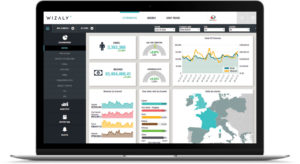[box]
Measuring and optimising the performance of their investments is the goal of every marketer. To do this, a new concept has emerged: algorithmic attribution.
What is attribution?
Attribution allows one to understand the contribution of each facet in the path of conversion of a user (purchase, lead, reservation, etc.), in order to be able to measure its impact and its performance.
In practice, attribution creates a model by assigning weight to each interaction between a prospect or customer and a brand. These interactions can be online: SEO, SEA, Display, Social, …. Or offline: television, call centres, physical stores. Thus, the assessment goes beyond the reductive (and inaccurate) practice of assigning conversions to the last click of the conversion path. Attribution models are used to measure the profitability of each interaction and maximise the return on investment (ROI) of the advertiser. Attribution is a tool appropriate for all advertisers: small and big budgets, pure player or traditional actor, and to any type of industry: insurance, travel, e-retailer, humanitarian association, etc…
[/box]
What is attribution for?
In practice, attribution provides answers to many questions:
- What is the true performance of my budgets and campaigns?
- I have an extra budget, where do I invest it to boost my sales?
- I have to reduce my investments by $10,000, where do I have to disinvest?
- What is the impact of my online investments on the offline and vice versa?
- How can I avoid duplicating the same sale to different channels?
- What is the actual impact of display ads on my performance?
- Visualise and understand synergies between channels; How to exploit them?
[box]
How does algorithmic attribution work?
The goal of attribution is to attribute a share of the conversion to the channels involved in the path, according to different rules. To do this, two main categories of models have emerged: “ad hoc” models and algorithmic models.
Ad hoc models are user-defined models, which use assumptions to build their model that reflect their understanding of customer dynamics. For example, an ad hoc model may consider that a click on a product page should weigh more compared to a click on the home page. These assumptions more often reflect the intrinsic biases of the designer’s opinions than the reality of the customer journey.
Conversely, algorithmic models abstain from any ab initio hypotheses and allow the computer to use all available data to find the model that best represents the customer path. Although much more complex to implement, algorithmic attribution represents the best assessment of the weight of each step in the customer journey. It is important to pay close attention to how these algorithms function, and to understand the variables on which they are based to ensure that they evolve according to the media mix and time. Certain metrics and characteristics are essential and must be present as foundations of the algorithm:
- Consider all channels.
- Take into account the nature of the point of contact (click, print or real view).
- Take into account on-site user engagement.
- Take into account how soon after the interaction a conversion is gained.
- Adapt according to the evolution of the media mix.
[/box][full-image bg=”https://esvdigital.fr/wp-content/uploads/2017/04/attribution.jpg”]
Integrate as much data as possible with the model: Why? How?
Algorithmic attribution does not only apply to digital channels. If you are able to recover structured and comprehensive offline data, you will be able to measure the performance of your media mix as a whole. The allocation model will then combine the online and offline data and give you a holistic view of your different channels as well as existing synergies between channels.
In particular, granular integration of offline media investments will make it possible to measure return on investment (ROI). Similarly, a cross-device reconciliation or the integration of your CRM data will allow for a more precise understanding of customer paths towards the act of purchase. It is therefore necessary to maximise the use of connectors in order to automatically integrate all this data within the same platform. Once the data is collected, it is then possible to measure, understand, and improve its media mix as a whole. As a result, you will be able to control, via a single tool, all the channels you use.[box]
What are the key success factors?
When starting up an attribution project, several key success factors need to be given particular attention: first, the quality and completeness of the data used, in order to create the model that best reflects the reality of the impact of each marketing channel. Using false or partial data creates an inaccurate model. Second, you should measure your return on investment by analysing the lifetime value of your customers rather than a discrete event, such as a purchase, that only partially reflects the interaction of your customers with your brand.
Finally, it must be taken into account that algorithmic attribution is a technically complex subject. Choosing the technology that suits your needs and being guided, temporarily or over time, by subject experts is an investment that will pay over time.
For more information on how you can incorporate multichannel attribution into your marketing strategy, tweet at us @ESV_Digital_UK or follow us on LinkedIn.
[/box]

